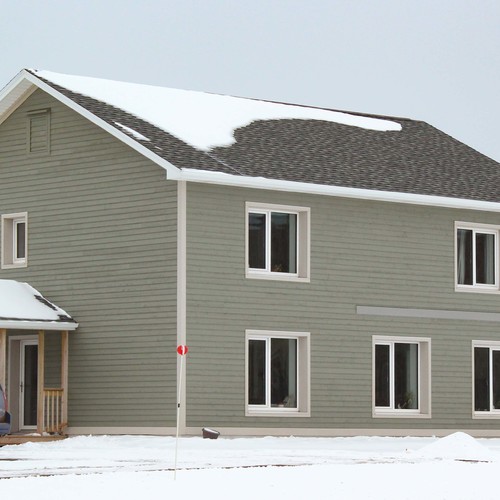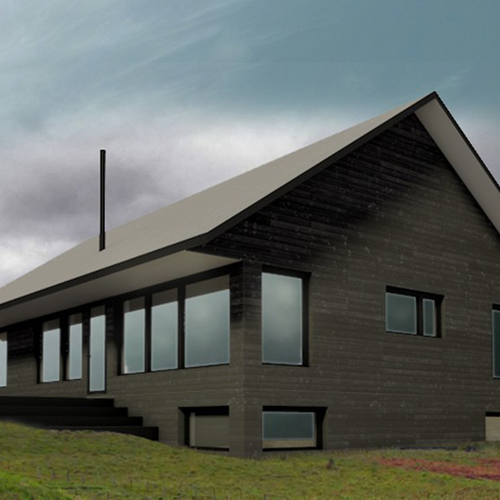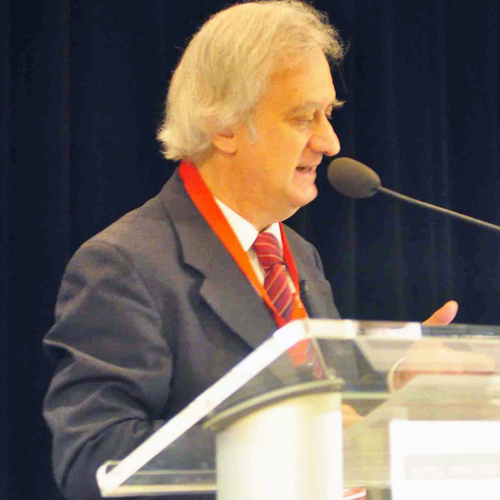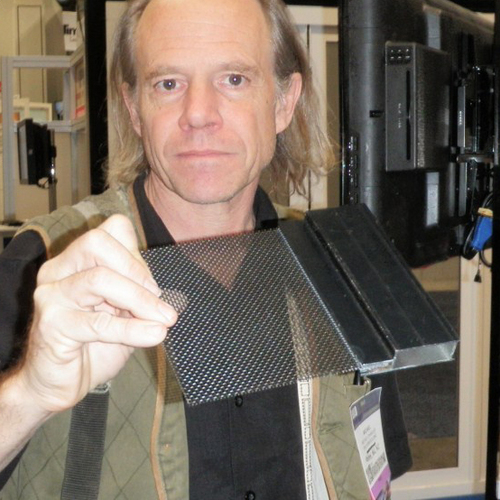
Image Credit: City of Fort St. John
Editor’s note: Canada’s northernmost certified Passivhaus is an 1,895-square-foot home in Fort St. John, British Columbia, where the average number of heating degree days over the last five years has been more than 10,500 annually. The house, completed in 2014, is owned by the city and was described in a Green Building Advisor report in 2014. For more than a year, the house has been occupied by two caretakers, Catherine Ruddell and Paul Gillis, who act as hosts for tours of the project. Catherine recently sent this report of what it’s been like to live there.
After living in one for over a year now, the benefits of a Passivhaus can start to surprise you. Not in amazing/high-tech/revolutionary ways — though we have definitely had those moments, too — but in more subtle ways we weren’t necessarily expecting.
I was chatting with a friend over coffee the other day and he mentioned his persistent sinus infection. “It’s a winter thing,” he said. Basically, from the time he turns his furnace up in the fall, and down again in the spring, he’s spent half the year feeling dry, congested, and most likely with an infection needing treatment. We don’t get that.
In hearing everyday stories from other people I am sharply reminded that I have been living in a luxury home. The main mechanical system in a Passivhaus is most likely the air circulator — we have an HRV, or heat-recovery ventilator. Its primary function is to exhaust and recover heat from outgoing stale air, and then bring in more fresh air that is at a comfortable temperature.
I’ve taken for granted what an amazing feature this is. But it really shouldn’t be an “amazing feature” of the modern home. It is actually basic building science that has somehow dropped down the list of priorities when building homes. The average homeowner worries more about the color of their stove than the quality of the air their family will breathe in every single day.
Another subtle way by which I’ve come to understand the fundamentally simple operation of a passive house is to watch other people’s pets. Sounds strange, I know, but what does the average indoor pet spend most of their time doing? Chasing the sun! They have a preferred spot on the floor or sofa, for basking in the daytime sun. I remember our childhood dog made an exact science of where to plunk her body to enjoy the light and warmth of the largest source of free energy known to our planet.
Passive Houses face the south to capture the free benefits of the sun through large, high-performance windows that retain heat entering the home. It will cost almost nothing to heat a home on a sunny winter day – even in the north where -4°F is just an average winter day. This would be the single greatest thing about living in a Passivhaus — after spending much of my life in the cold north (and a few years on the grey rainy coast). But I am also a creature who craves sunlight, and a Passivhaus is designed to maximize one’s exposure to the sun. So no need for seasonal affective disorder lamps around here!
The comfort factor
I’ve found that Passivhaus principles are easiest for people to understand and become excited about when you can relate the comfort factors in familiar ways. After immersing myself in very technical Passivhaus language through conferences and endless internet research, I find that it helps to stick to the basics.
When we have people over to the house, we keep it simple. They may not initially notice that the indoor air quality is “good” or immediately feel that it is “warmer” when they walk into our home. It is comfortable, for sure, but how do they know we haven’t cranked up the heat or just had a cleaner come through? But they will likely recall the last time they walked into a friend’s home, and after a while started yawning and feeling tired from the stale air. Or maybe they sat down in a friend’s living room and thought there was a window open because of unsettling drafts. Trust me, these are just average issues in average homes in our climate.
A Passivhaus is well insulated and airtight; therefore there are no drafts. Apart from the solar gains, the home we live in uses two ductless minisplit air-source heat pumps (Mitsubishi Mr. Slim units). There is one on the main level and one on the second level. To provide supplemental heating when the temperature drops below -4°F, there also are electric resistance baseboard heaters throughout the home.
We have found the single heat pump on the main floor can adequately heat the entire home down to about 0°F. When it gets colder than that, the heat pumps no longer bring in sufficient heat, and so we switch to baseboard heaters.
Through the past summer, the solar (photovoltaic) array was able to produce and feed power back to the grid, building a substantial credit on the utility bill. We didn’t start heating the home consistently until the last week of November (to put our winters into perspective — we usually plan kids’ Halloween costumes to fit over the top of snow suits.). By staying aware of the weather as we eased into winter, we would ensure that the drapes were open if the forecast called for sun, and adjust if it looked to be cloudy or overcast. Despite shorter days, if it was sunny the house was sufficiently warm with little to no heating through the evening. Also, if there was no snow built up on the PV panels, they continued to produce power.
It will be interesting to see data for the full year to really gauge the cost savings from the grid-tied PV system. Production from clear and sunny winter days as well as long daylight hours in the summer should offset the additional heating use of electrical baseboards through the darkest and coldest part of our winters.
Public response is overwhelming
When we held the first open house tour for the public, we were shocked by the turnout. We had about 200 people through the house in eight hours. The response was incredible: there were people with sincere interest and thoughtful questions. There were tradesmen who stayed for substantial lengths of time to take it all in, and others who stayed to debate with other visitors the merits of a Passivhaus.
There are a few especially important points for the Passivhaus and performance building communities to understand if they are going to convert the masses into Passivhaus home owners (which would be an incredibly positive feat for the future of our planet.) The Passivhaus concept has to be easy to understand, and the systems should be user friendly to the average person.
A lot of the available information translates well for technical audiences, but they are already converts of the low-energy lifestyle. We met many people, young and old alike, who are willing to spend money on housing that aligns with their values of reducing their impact on the planet. But they want the straight talk: How does it work? What will it cost me? How much will it save me? Will it feel better than my current home?
We also hosted a tour by an out-of-town trades crew through the house this fall. They were in the area assembling a timber-frame building for clients, but we had them over one evening. Two of them had completed the Passive House Designer Certification — meaning they are trained to design and build to the Passivhaus standard, and we had actually met them at the NAPHN 2015 conference a few months earlier. It was the first time one of them had actually been inside a Passivhaus and he was thrilled.
These builders were also really impressed that our city built the house as a demonstration home for its citizens and that it was open for public tours. It would be a unique opportunity to have Passivhaus training courses here in Fort St. John for that very reason. Many people have trained to build these houses but there are few opportunities to view homes that are open to the public.
Not many nits to pick with this house
It’s been really incredible to learn about a Passivhaus by living in one. To be honest, we have a hard time coming up with items we would change or do differently, as the few things that immediately come to mind are arbitrary (for example, we would prefer a slightly smaller home, and there are elements of interior finishing that come to mind. But that has nothing to do with whether or not this house is passive.)
Some of the things we would give more consideration to on future projects are these:
- Exterior shading on south-facing glazing. To date we have had some issues of overheating on warmer summer days; this is generally mitigated quickly by naturally ventilating with open windows.
- Pre-tempering incoming air through the HRV. We have noticed when the temperature dives below -4°F, raising the temperature of the incoming ventilation air with a small electric heater could be beneficial.
- A more compact HRV system. There are some really interesting systems available now that look much more friendly and take up less room than the one in our home (a Tempeff).
- LED lighting. Currently there are conventional fixtures with incandescent bulbs. (We took the CFL bulbs out because we just can’t get used to the color.) We’ve since found some LEDs that we think we would be comfortable with.
- Digital thermostats on our baseboards heaters.
My husband is a builder and I have a background in design; we are both interested in sustainability and improving the quality of buildings we live in. It’s a blessing and a curse that we’ve been able to test-drive a Passivhaus. We know we want to live in one again. We also know it will be hard to live in anything substandard after this.
About a year ago we bought a one-acre property in our region with the hopes of building a Passivhaus. However, we have since decided to pursue further education and will be traveling so that my husband can attend the master program in Wood Product Innovation at UNBC within the next year. We will hold onto our property while we are away, but there’s no telling what the future holds once the program is finished.
When we come back and decide it will be our forever home, then we will build a Passivhaus, certified or not. If we decide to relocate, we will still build a low-energy house or a Passivhaus, wherever we set down roots.
We are incredibly proud of the steps taken by our city to educate the community about low-energy homes. This project will make it much easier for the average homeowner to pursue a Passivhaus dream in the future.
Weekly Newsletter
Get building science and energy efficiency advice, plus special offers, in your inbox.















6 Comments
Alternative HRVs
You write that "[t]here are some really interesting systems available now that look much more friendly and take up less room than the one in our home." What systems have you been looking at that are an improvement? Thanks for the information!
Hi Ethan! There are compact
Hi Ethan! There are compact yet efficient units available through companies such as Zehnder, or Lunos. Those are the two that come to mind although I'm sure there will be more.
compact H/E RV
Some of the options:
Twinfresh by Vents-US is a lower cost product similar to Lunos. Both are "ductless" and make the installation much easier and cheaper. Both have several models you can mix and match to design a system that addresses bathroom exhaust as well as general ventilation. Their approaches to bathrooms are a little different, and I'm not sure which is better, but I think I like the concept Lunos uses better.
Zehnder systems can be large, complex and expensive. But they are terrific systems. And their small diameter flex duct system is easy to install inside walls if your code officials allow it.
Panasonic makes a nice small, low-capacity ERV system.
Hi Catherine!
Love the house, by the way. Would love to see more builders get on board to achieve a higher standard for efficiency!
Curious how large your solar array is on the roof (I see 12 panels in the picture), and how much is the solar output offsetting your hydro bill.
Thanks, Paul (in London, Ontario)
Paul,
If you read the companion article (see the link in the introduction, or use this link: "Canada’s Northernmost Passivhaus"), you'll find these details on the home's PV system: "A rooftop solar array of 12 panels with a total rated capacity of 2.8 kilowatts. Planners estimate the system will generate 3,500 kWh of electricity per year, roughly one-quarter to one-third of estimated demand."
Thanks Martin. I missed that!
Log in or create an account to post a comment.
Sign up Log in